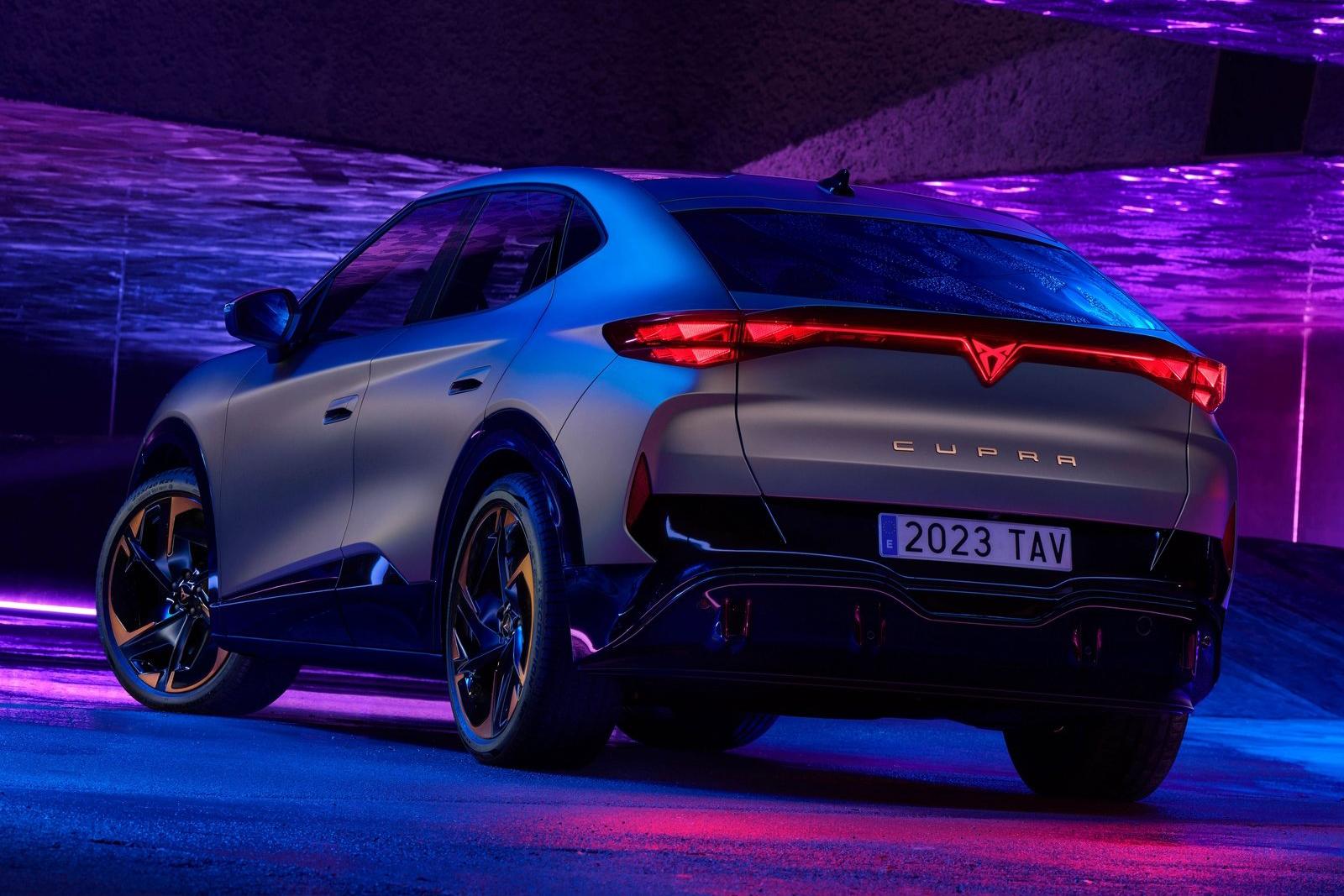The Volkswagen Group’s sporty Spanish brand Cupra has unveiled the Tavascan, its first all-electric SUV.
It’s set for a 2024 launch, and will come to Australia in 2025 alongside production versions of the Terramar mid-sized SUV and UrbanRebel electric hatch.
Remaining largely faithful to the 2019 concept car, which was also updated in 2022, the Tavascan has a sporty stance thanks to its “shark nose”, raked roofline, and the polished black A-pillar connecting the windscreen to the side glass to mimic a racing driver’s visor.
Matrix LED lights with Cupra’s ‘three-triangle eye’ signature motif can be found alongside an illuminated Cupra logo.
At the rear the same triangular motif is continued on either side of a full-length light bar, all sitting below a small spoiler.
The crossover measures in at 4644mm long, 1861mm wide, and 1597mm high with a wheelbase of 2766mm.
Based on the MEB architecture underpinning myriad Volkswagen Group vehicles, including the Volkswagen ID.4 and ID.5 and Cupra’s own Born, the Tavascan will be built in Anhui, China for all markets.
The entry-level Tavascan Endurance features a 210kW single-motor rear-wheel drive powertrain, while the Tavascan VZ upgrades to a 250kW dual-motor all-wheel drive set-up.
The VZ produces 545Nm of torque from its rear motor and 134Nm from the front, reaching 50km/h in 2.4 seconds. It does the 0 to 100km/h sprint in 5.6 seconds.
Cupra has reported a range of around 550km thanks to a 77kWh lithium-ion battery pack centrally positioned between the axles.
In terms of charging, Cupra claims the Tavascan can gain an additional 100km of range in seven minutes, and go from 10 per cent to 80 per cent charge in under half an hour using a 135kW charger.
The Tavascan offers adaptive suspension and progressive steering, as well as a choice of 19, 20, and 21-inch forged alloy wheels.
Weight distribution is 49:51.
Inside the cabin, Cupra has adopted VW tech such as the floating 15-inch infotainment system found in the Volkswagen ID.7, a 5.3-inch digital cockpit behind the steering wheel, and a 12-speaker Sennheiser sound system.
Cupra cites the central spine, sitting below a clean dashboard with slim air vents, as the key interior element creating a driver-focused cabin.
The interior is adorned with copper accents and ambient LED lighting in trim elements such as door panels and cup holders.
Sculpted bucket seats will be offered with two types of upholstery: Textile, with up to 90 per cent recycled polyester; and Microfibre, with up to 50 per cent recycled microfibre.
Paddle shifters behind the steering wheel allow the driver to select between four levels of regenerative braking.
The infotainment system is equipped with a new customisable Human Machine Interface (HMI), and the expected Apple CarPlay and Android Auto.
A host of advanced driver assistance systems (ADAS) are available, and all relevant information is available in the driver’s line of sight thanks to the augmented reality head-up display system.
Systems include adaptive cruise control, lane assist, and a rear-view smart camera, as well as emergency assist measures to monitor the driver’s attention, and assisted parking that can be controlled remotely via a smartphone.
“There are so many purely rational electric cars coming to the market. That’s not what Cupra is about,” said Cupra CEO Wayne Griffiths.
“In 2019, we had a vision to reinvent electrification: we wanted to show with Tavascan that it’s not a vehicle responding to change, but a car that creates it.”
The Tavascan will be the brand’s second fully electric model after the Cupra Born hatchback.
Cupra has also confirmed it will introduce electric successors to the current Leon and Formentor as it plans to go EV-only by 2030.
Using Australia as a beachhead, Cupra wants to expand its global presence and reach 500,000 annual sales worldwide in the medium term.
Cupra plans to sell 7000 cars per year in Australia by 2025.
It’s an ambitious target, as it took fellow Volkswagen Group brand Skoda more than a decade to reach that volume locally.






